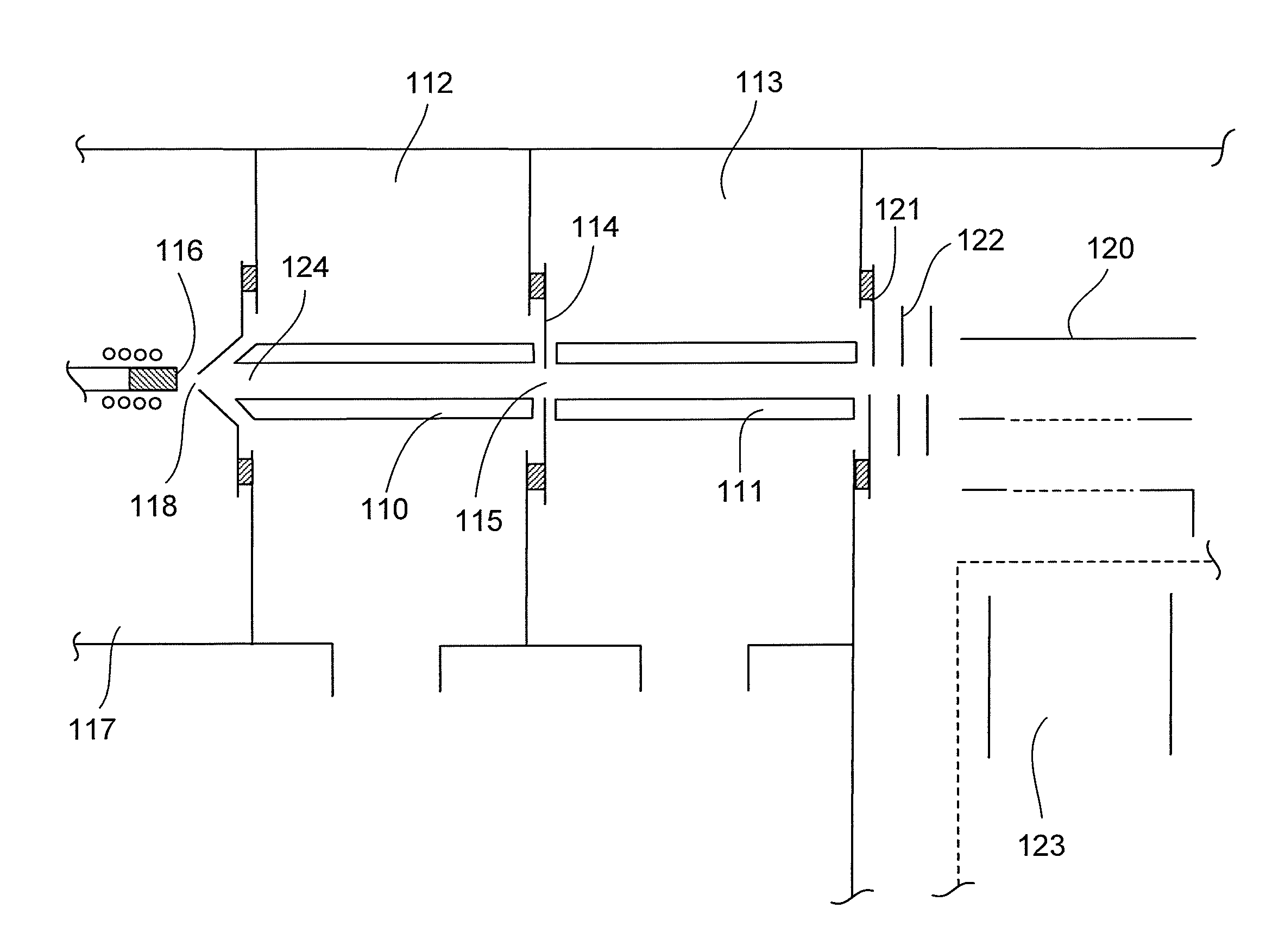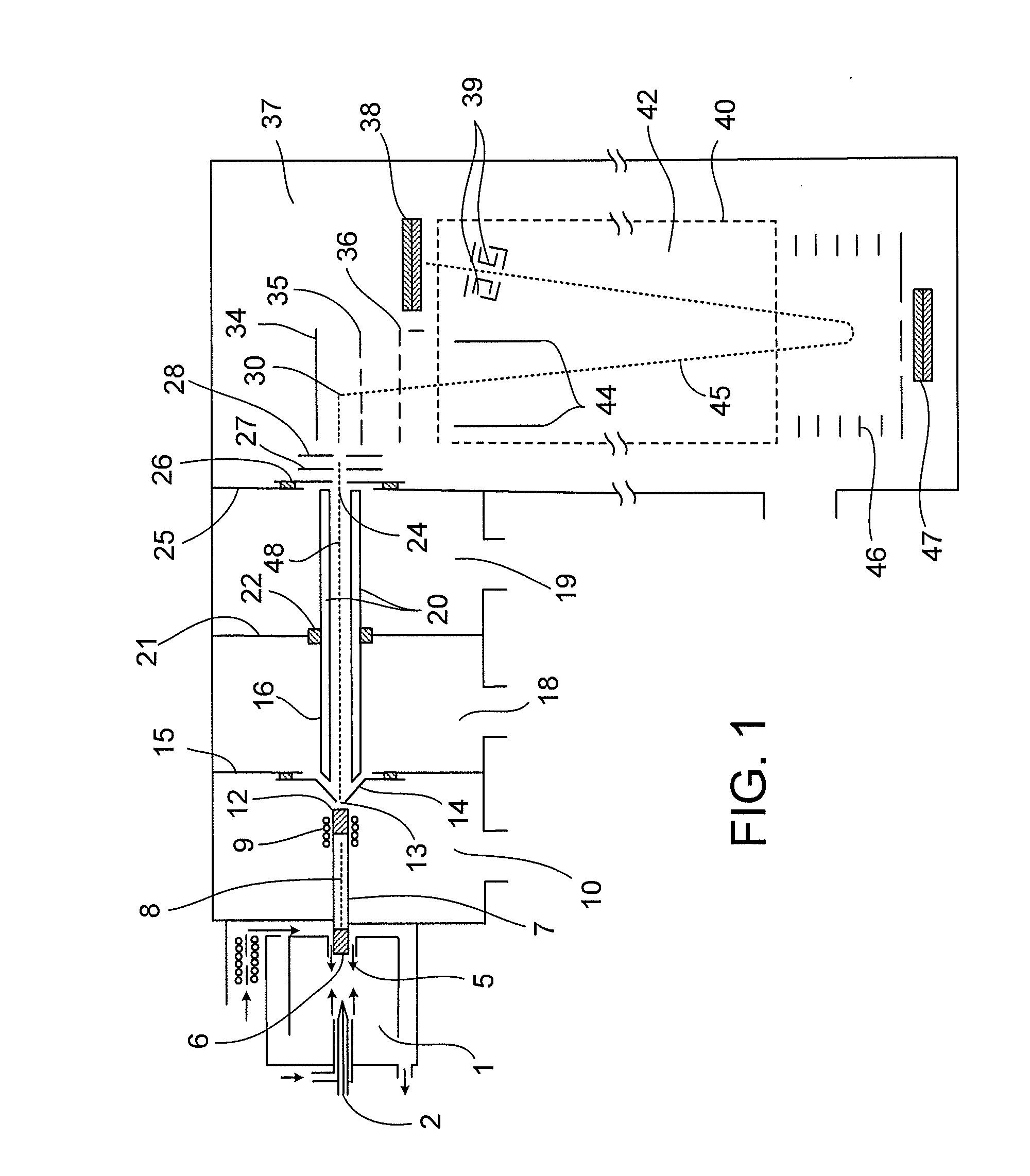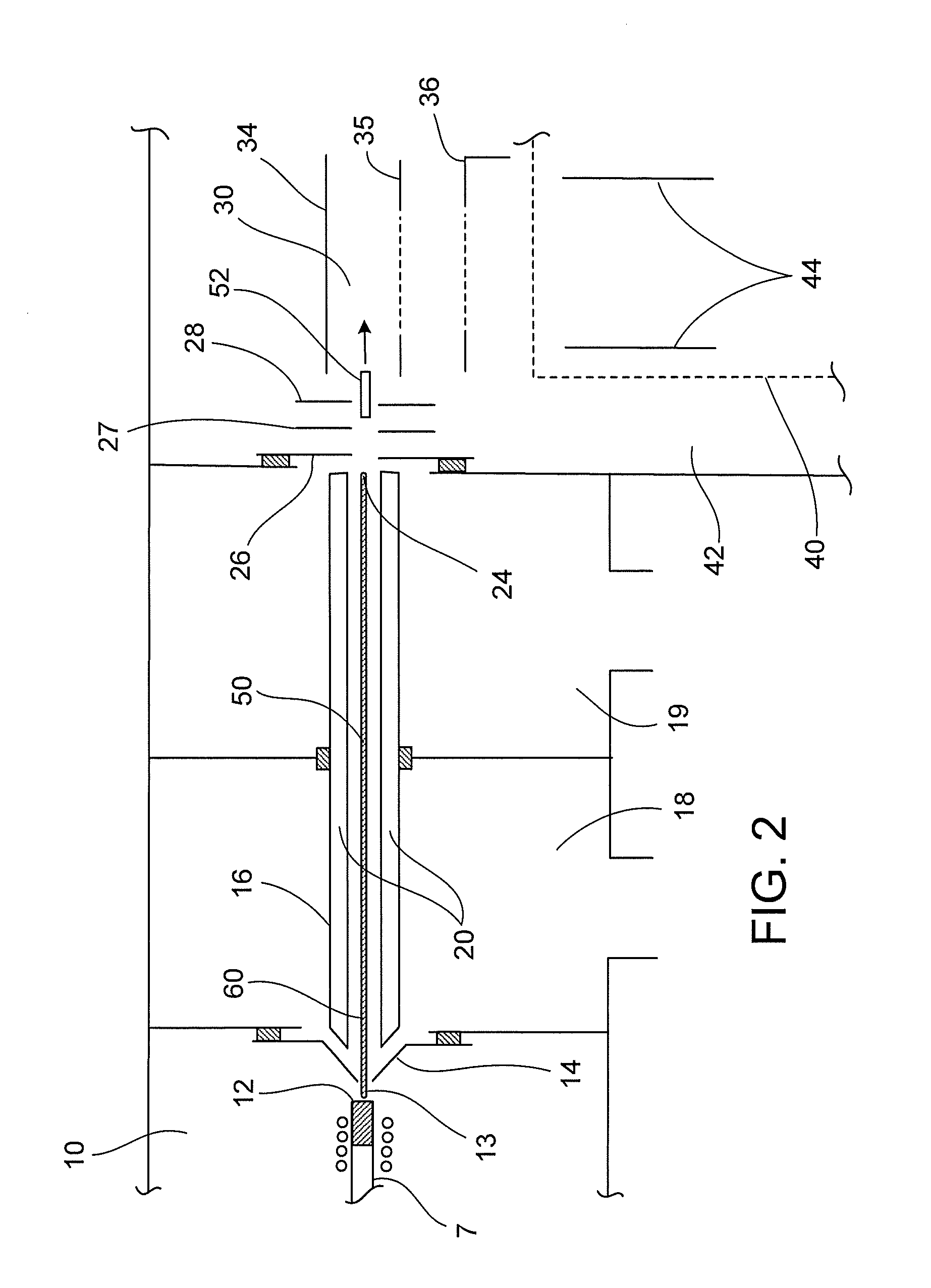Multipole ion guide ion trap mass spectrometry with MS/MSn analysis
a mass spectrometry and multi-ion guide technology, applied in the field of mass analysis, can solve the problems of reducing sensitivity, reducing duty cycle and sensitivity with tof mass analysis, and reducing sensitivity, so as to improve ms/msn performance capability, improve duty cycle performance, and improve the effect of resolution or mass accuracy
- Summary
- Abstract
- Description
- Claims
- Application Information
AI Technical Summary
Benefits of technology
Problems solved by technology
Method used
Image
Examples
Embodiment Construction
[0034]Atmospheric Pressure Ion sources interfaced to mass analyzers include Electrospray, nebulizer assisted Electrospray, Atmospheric Pressure Chemical Ionization, Inductively Coupled Plasma (ICP) and Glow Discharge ion sources. Ions produced at or near atmospheric pressure by one of these ion source types are delivered to vacuum through a nozzle or capillary orifice along with the carrier gas which was present in the atmospheric pressure source chamber. The gas exiting the orifice into vacuum forms a free jet expansion in the first vacuum pumping stage. The vacuum stage partitions and ion optics downstream from the orifice into vacuum are designed to provide an efficient means of transporting ions into the mass analyzer with a minimum energy spread and angular divergence while neutral background gas is pumped away. One or more vacuum pumping stages have been used with various API / MS designs. Mass analyzers such as TOF require that flight tube operating pressures be in the low 10−6...
PUM
 Login to View More
Login to View More Abstract
Description
Claims
Application Information
 Login to View More
Login to View More - R&D
- Intellectual Property
- Life Sciences
- Materials
- Tech Scout
- Unparalleled Data Quality
- Higher Quality Content
- 60% Fewer Hallucinations
Browse by: Latest US Patents, China's latest patents, Technical Efficacy Thesaurus, Application Domain, Technology Topic, Popular Technical Reports.
© 2025 PatSnap. All rights reserved.Legal|Privacy policy|Modern Slavery Act Transparency Statement|Sitemap|About US| Contact US: help@patsnap.com



